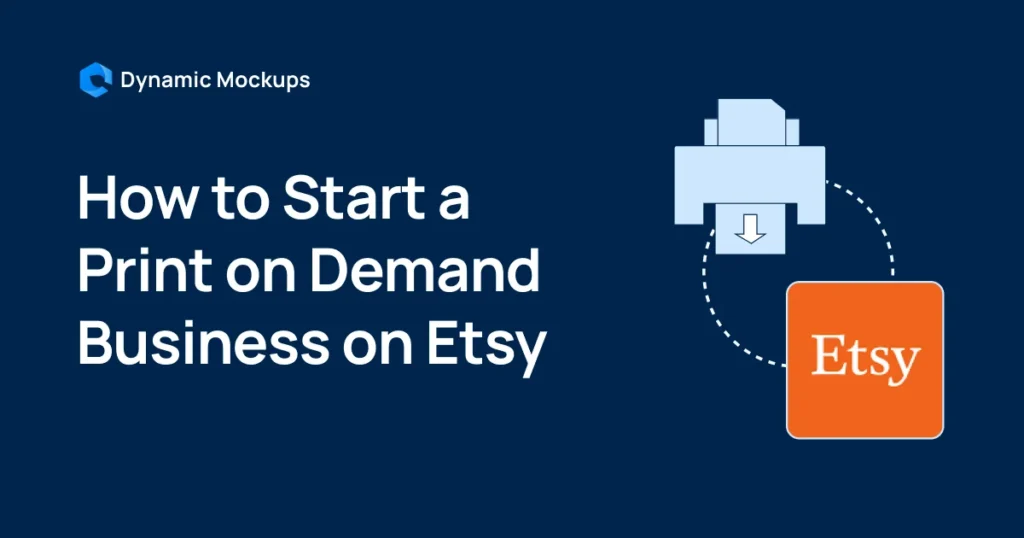Mockups are essential for print-on-demand products, as they allow you to see what the final product will look like before the purchase.
Furthermore, if POD software enables APIs, various integrations can make mockup creations faster and more effective.
However, to maximize mockup API potential, it is necessary to grasp basic things about it.
This is where our API mockup guide comes in handy – to provide all you need to know to use APIs.
Let’s dive in!
Start creating for Free!
Showcase your E-commerce products like big brands, without costing a fortune
What Is An API?
Put simply, an API (Application Programming Interface) is a way for different software systems to communicate with each other.
Thus, APIs enable software platforms to access the features of other platforms without the user needing to comprehend the technical details of how they work.
One of the most popular data exchange formats is JSON, which transfers data between web applications and servers.
What Are API Paradigms?
API paradigms refer to the different styles or approaches to design and implement APIs.
Common ones include:
- REST (Representational State Transfer) – Creates web services.
- RPC (Remote Procedure Call) – Executes a specific function or procedure.
- GraphQL – Requests and receives only the data you need, and
- SOAP (Simple Object Access Protocol) – Exchanges structured data between client and server applications over a network.
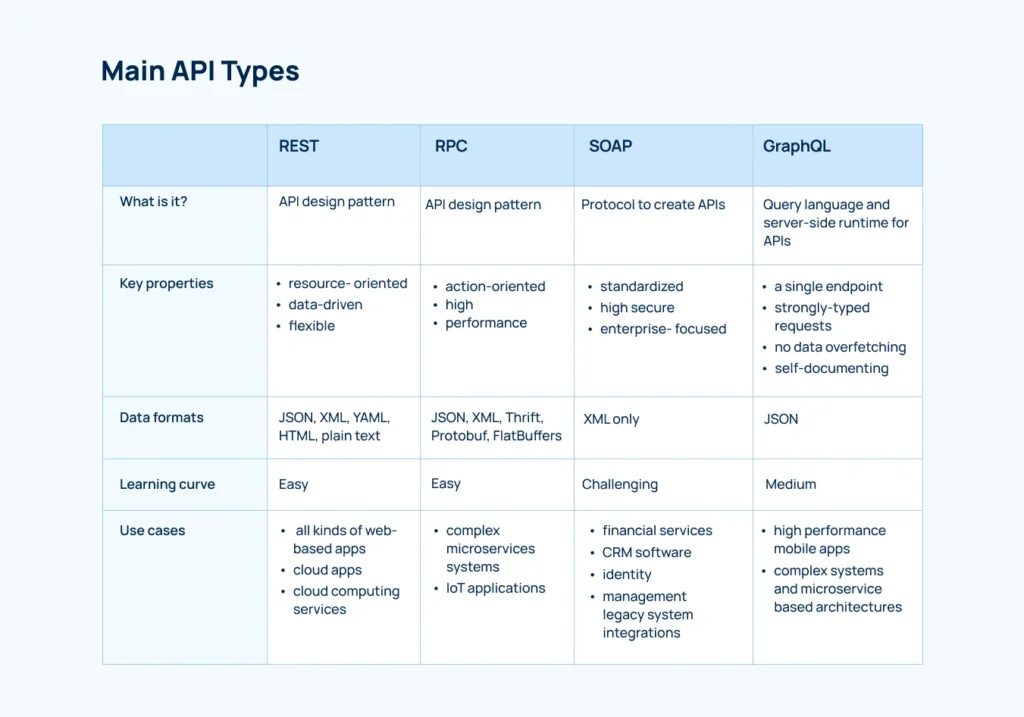
The choice of API paradigm depends on several factors, such as the nature of the app, the use case, the type of communication between the client and server, etc.
Nonetheless, REST is one of the most common ones, especially for public APIs.
What Is The REST Paradigm?
The REST (Representational State Transfer) paradigm is a set of architectural principles for designing web applications.
Thus, it develops APIs that “communicate” through an HTTP protocol – you send an HTTP request and get a generated HTTP response in return.
REST comprises 4 parts: an HTTP method, an endpoint, headers, and a body.
1. HTTP Method
An HTTP method describes which of the 4 following actions you’ll do with a resource:
- POST – You create a resource,
- GET – You retrieve it,
- PUT – You update it, and
- DELETE – You delete it.
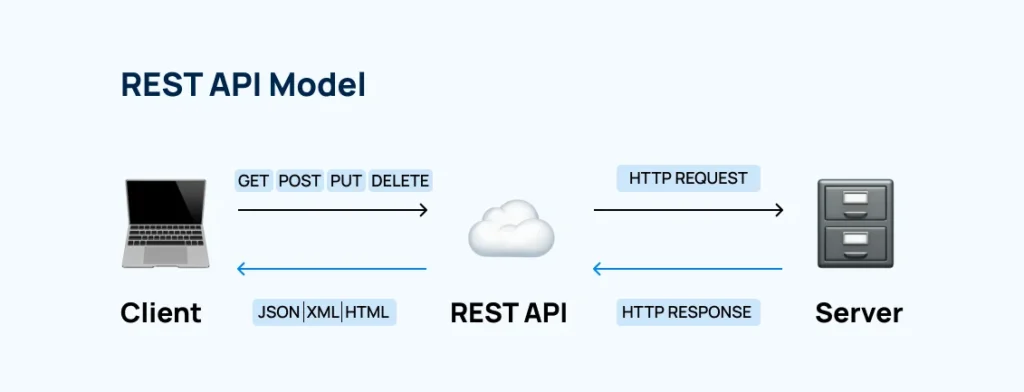
📌 Note:
Resources are the main concept in REST API, and they represent the data that your app wants to access and modify.
2. Endpoints
API endpoints are URLs that allow you to access specific functions in an API server.
In other words, an endpoint is like a specific access point to a certain kind of data or functionality that API provides.
For example, you can have an endpoint that allows you to create a new product mockup by sending a POST request along with the parameters, such as:
✨ The design file,
✨ Dimensions,
✨ Background color, and other styling options.
The API would then create the mockup and return the resulting image file in the response.
Defining and documenting the appropriate endpoints is crucial for API design and development.
3. Headers
Headers are additional information that can be part of an HTTP request or response.
They contain important information for both clients and servers, including authentication data and details about the server’s location and response format.
Headers consist of a key-value pair, where the key is the header’s name and the value is the information the header conveys.
4. Body
The body sends extra information to the server so you can add, change, and update data.
For example, when it comes to product mockups, the body could include properties such as the product name, description, pricing information, images, etc.
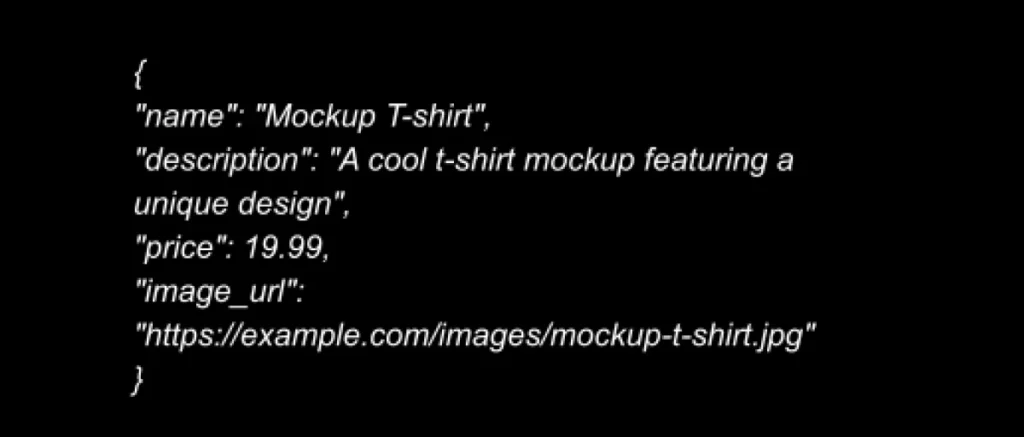
Afterward, the server might then store this data in a database or use it to generate a preview of the product.
The First-Party vs. Third-Party APIs: What’s The Difference?
The main difference between first-party and third-party APIs is the level of control and ownership that the first-party provider has over the API.
With a first-party API, the provider has full control over the API’s functionality, updates, and support.
In contrast, with a third-party API, the provider has less control over the API’s functionality and support and may be subject to changes or limitations by the third-party provider.
Why Opt For Print-On-Demand Software That Provides APIs?
Print-on-demand software that provides APIs enables you to build custom integrations or apps on top of the platform and automate your POD operations.
✨ Furthermore, you can integrate APIs into your existing systems to streamline processes and reduce manual data entry.
For instance, APIs can enable integrations with design software, such as Adobe Photoshop or Sketch, to generate high-quality mockups automatically.
✨ With the help of APIs, the POD software can send product information directly to the design software, automatically generating a realistic mockup your potential buyers can view on the website or eCommerce platforms.
✨ You can also use APIs to integrate with a product image library, automatically creating product mockups for all available products.
This can be especially useful if your print-on-demand business has large product catalogs, so creating mockups manually would be extremely time-consuming.
After all the nitty-gritty tech details, it’s time to get practical.
How To Implement an API Hassle-Free With Dynamic Mockups?
Step 1
Once you’ve logged into our Free app, you’ll see the intuitive API Dashboard.
You should click on the “Create new API Key” and enter your app’s name.
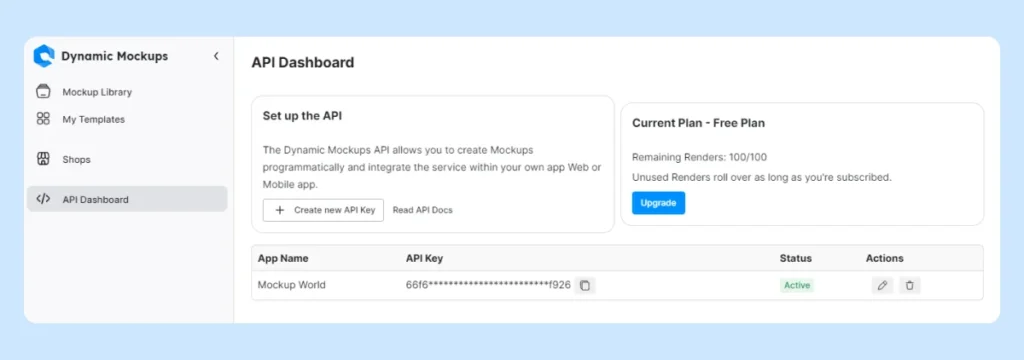
Then, you’ll get a unique API key you’ll need to copy when you start developing.
The key is essentially your authentication, enabling you to make API calls.
Step 2
Now that you’ve got your unique API Key, it’s time to create a template. You can do it in 2 ways:
- Choose the mockup from our Mockup Library, or
- Upload your own mockup via My Templates.
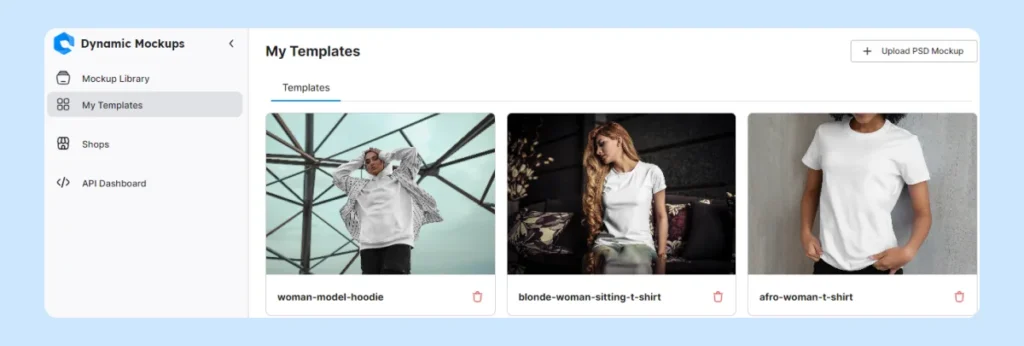
💡 ProTip:
Did you know that with Dynamic Mockups, you can upload your Photoshop templates as mockups and automate the placement and adjustment of those designs using smart objects?
Our software supports all Photoshop blending modes to make your mockups even more realistic.
This way, you can customize the mockups according to your needs, tailor them to your brand and target audience, and monetize them.
In addition, you can use virtually any PSD file you have or find on the internet.
Step 3
Your mockups now contain the necessary information to make renders, like mockups’ and smart objects’ UUID.
UUID, a Universally Unique Identifier, identifies objects in a database or assigns unique IDs to different records.
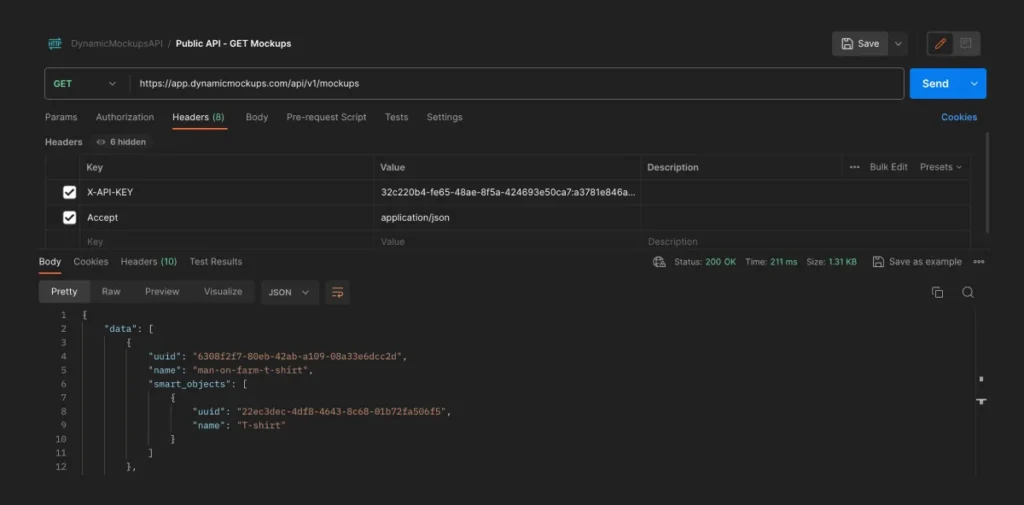
By sending your request with asset or color data, you will get the batch UUID that contains your renders (images) as a response.
You’ll also get the URL paths of your renders, and you can choose whether you’d like to generate a single render or render batch.
🔥 For a detailed description of all the API mockups, jump to our Get Mockups page.
Here at Dynamic Mockups, we provide you with the technology to:
- Start your own app that needs mockups,
- Use your API key on some other platform and either create something totally new or just enhance the existing product mockups in a dynamic way.
What Else Is In Store For You?
Dynamic Mockups is an automated mockup generator tool for POD businesses, providing features that allow you to showcase your products in an appealing and realistic way.
It provides a variety of automation features to reduce operational costs and increase efficiency by generating a large number of high-quality mockups.
And it is precisely the bulk creation that sets Dynamic Mockups from other competitors.
🔥 Bulk Creation
You can create multiple mockups in one go, significantly reducing the time and effort compared to manual processing.
It means you can upload multiple designs and color combinations and automatically get all variations of mockups.
You only need to choose the color combinations, including design assets, and that’s all.
🔥 Editing Features
Dynamic Mockups lets you see all the changes while editing your image.
To adapt your product designs, you can make color changes, select the print area, set the fit mode, apply transform perspectives, such as skew, distort, rotate, etc.
What’s more, you can see all the changes at once because the editing process is automated.
🔥 Public Mockup Library
Our evergrowing Mockup Library enables you to access various mockups such as T-shirts, Hoodies, Wall art, Sweatshirts, Pillows, Blankets, Tote Bags, Phone Cases, etc.
🔔 Stay Tuned
We’re about to release integrations with Etsy and Shopify, and our Design Library, which will allow you to store all designs in one place, will “open its door” soon.
Ready to jump on our bandwagon? Start with Dynamic Mockups for free and automate your POD business.


